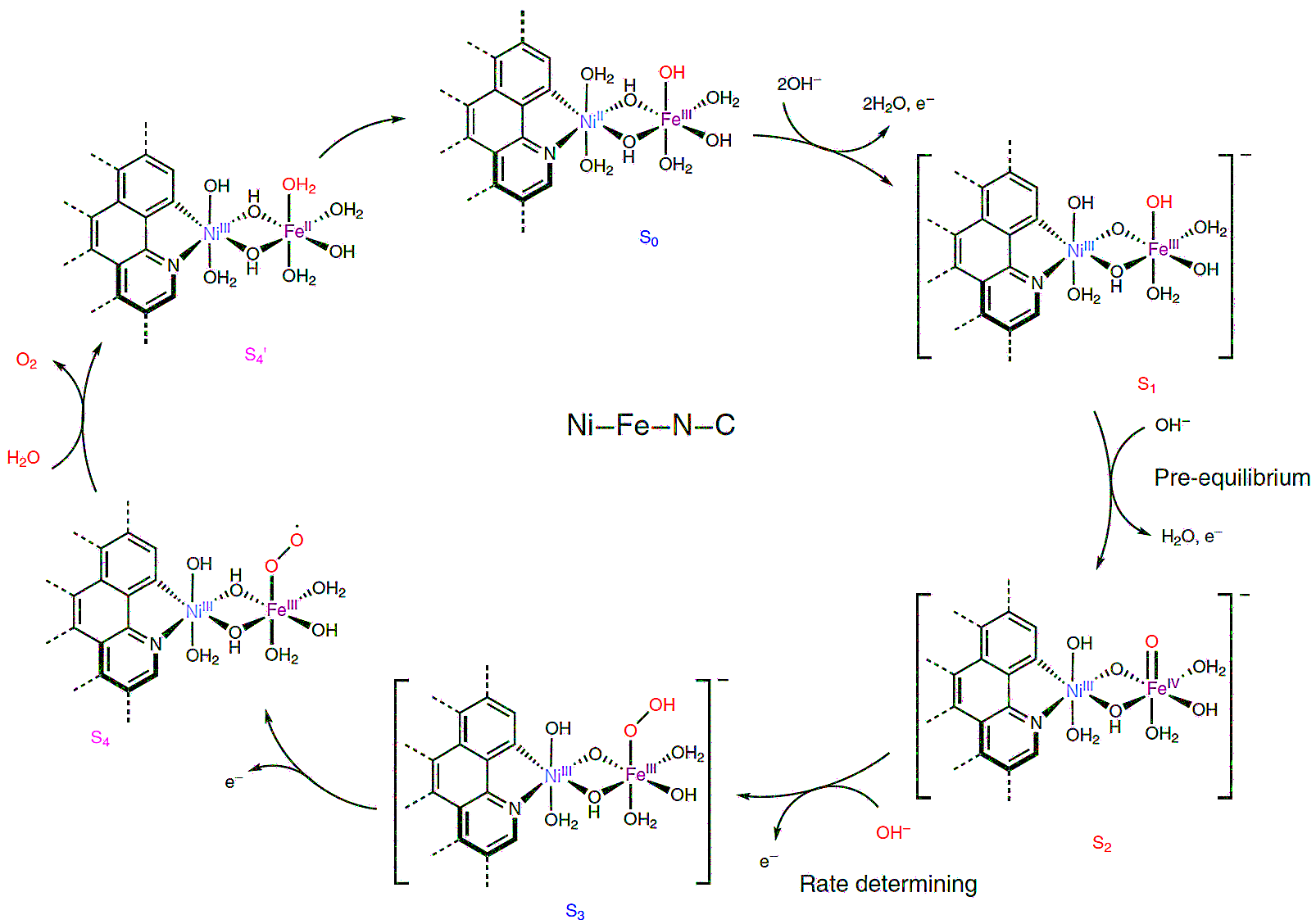- The full article entitled “Double-atom catalysts as a molecular platform for heterogeneous oxygen evolution electrocatalysis” can be found at the Nature Energy website at https://www.nature.com/articles/s41560-021-00925-3
- Authors: Lichen Bai, Chia-Shuo Hsu, Duncan T.L. Alexander, Hao Ming Chen*, Xile Hu*
The oxygen evolution reaction (OER) is a chemical reaction that enables the generation of molecular oxygen. This reaction is crucial for producing fuels through water splitting or through the electroreduction of CO2. So far, mixed metal oxides containing Co, Fe or Ni have been found to be the most promising electrocatalysts for eliciting this reaction. However, due to their heterogeneity, these catalysts and their reaction mechanisms can be difficult to study. In recent years, some scientists have also been closely examining atomically dispersed catalysts, an emerging class of heterogeneous electrocatalysts with a high atomic efficiency, which include single-atom catalysts and discrete sub-nano clusters. This new type of catalysts is characterized by uniform and well-defined active sites, which might be easier to probe and examine.
Prof. Hao Ming Chen in National Taiwan University with researchers in Ecole Polytechnique Federale de Lausanne (EPFL) have recently introduced a new molecular platform that could be used to prompt and study heterogeneous OER electrocatalysis. This platform, introduced in a paper published in Nature Energy, is based on double-atom catalysts, catalysts in which all active metal species exist as two atoms. Using a technique known as operando X-ray absorption spectroscopy (XAS), the active site of the catalyst they created was a dimeric Co-Fe moiety. Their findings ultimately proved the potential of double-atom molecular platforms for the development of defined and highly active OER catalysts.
To prove the overall effectiveness of double-atom catalysts for heterogeneous OER electrocatalysis, the researchers showed that the transformation into double-atom catalysts is possible for Co, Fe, and Ni containing single-atom pre-catalysts. They thus created various double-atom catalysts and characterized their structures using operando XAS and high-energy-resolution fluorescence detected (HERFD) XAS. In addition, they examined them using a method known as aberration-corrected scanning transmission electron microscopy analysis.

Fig.1 Electrochemical OER activities of various single-atom and double-atom catalysts

Fig.2 OER mechanism on Ni-Fe double-atom catalyst